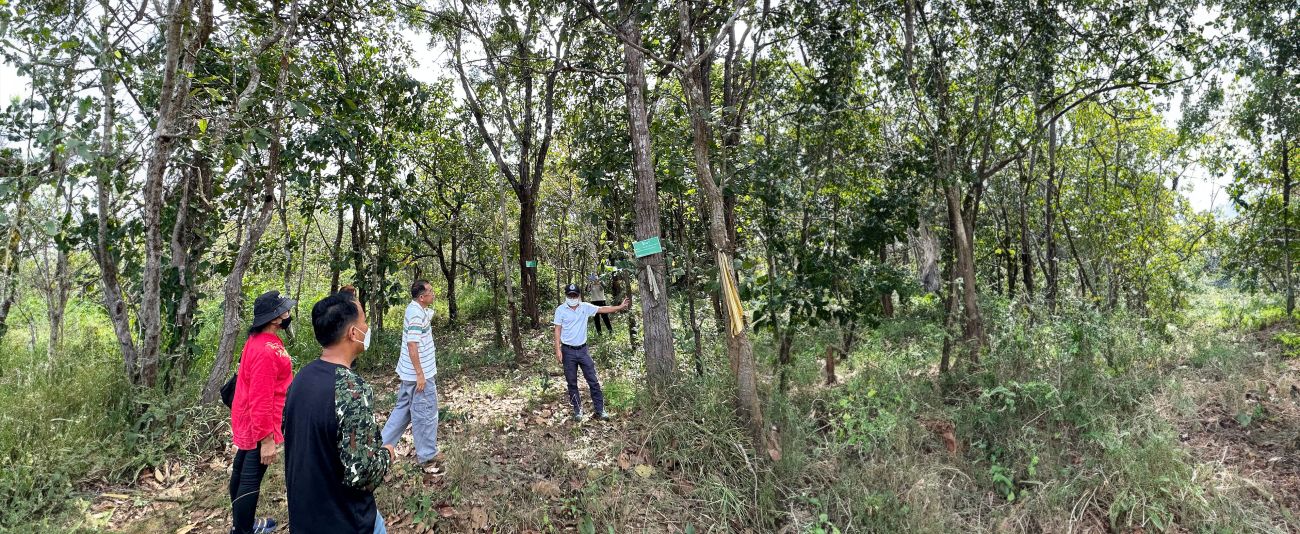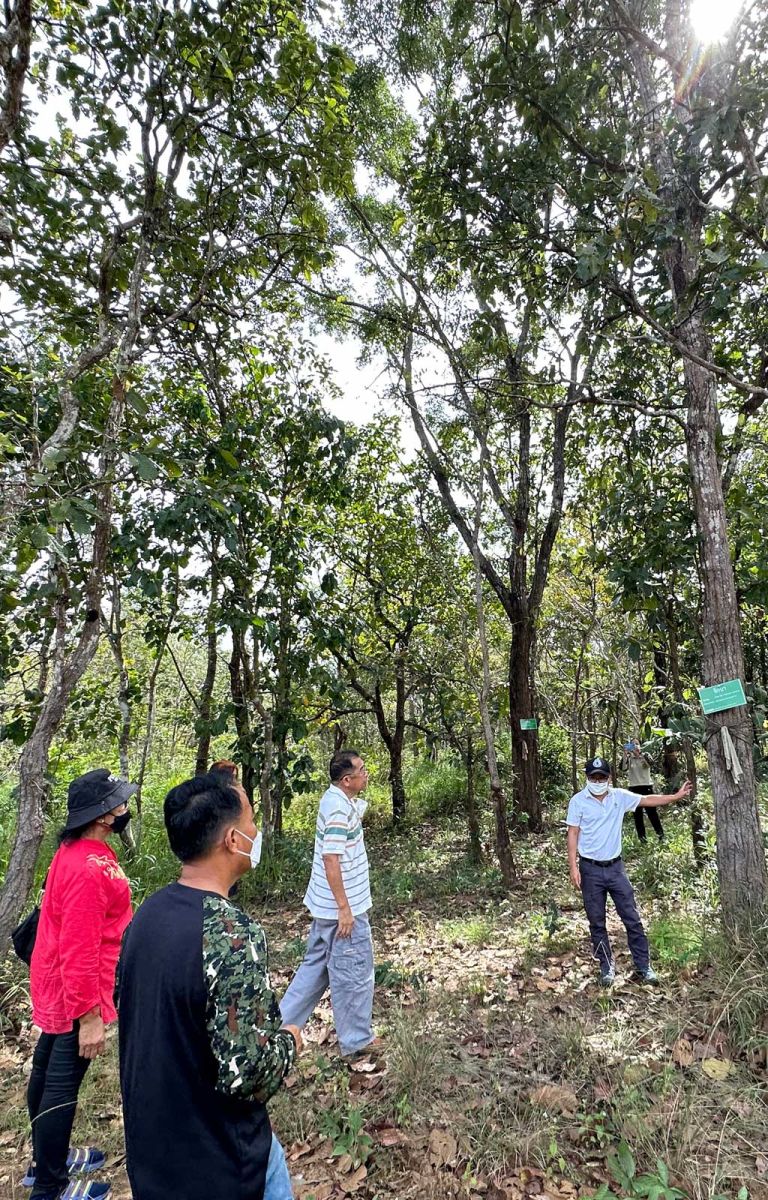

“If no one knows about our community forests, it’s as if our forests don’t exist,” says Thammarat Moonsarn, the youth communication officer for tourism in the Kaeng Lawa Community Forest, in Thailand’s Khon Kaen Province.
Kaeng Lawa is one of several active community forests located on public land that has not been yet recognized formally. At the same time, there are nearly 12,000 community forests that Thailand has formally recognized since 2019, giving local people rights to use and benefit from the forests’ resources.
Combined, these formally recognized areas cover close to a million hectares. But there is lack of information about either the formally recognized community forests or those that have not been formally recognised. This is preventing this model of forest management from reaching its potential and the formally unrecognized community forests from being acknowledged by the public.
“Thailand’s community forests are largely invisible in online platforms,” says Warangkana Rattanarat, director of RECOFTC Thailand. “Very little data from these forests reaches the public, so outsiders are unaware of the goods and services they provide. This means communities are missing opportunities to gain sustainable incomes from their forests.”
That is now changing thanks to a RECOFTC Thailand project called CF-NET that established the Citizens’ Forest Network. As well as giving communities greater roles in forest governance processes, it has literally put Thailand’s community forests on the digital map. This is enabling the communities managing those areas to connect with each other, with potential customers and partners, and with the public at large.
A network of networks
The CF-NET project (link in Thai) began in 2018 amid big changes to forest governance in Thailand. The following year, the government enacted four major laws: the Community Forest Act, National Park Act, Wildlife Protection and Conservation Act, and National Land Policy Commission Act. Together with the Marine and Coastal Resources Management Act of 2015, these laws and their subsidiary regulations determine the rights and benefits that communities can receive from forest resources in different types of land.
RECOFTC Thailand developed CF-NET to empower civil society to advocate for community rights and priorities as the new laws and forest governance mechanisms emerged. The project ran from March 2018 to July 2022. It was funded largely by the European Union, and implemented by RECOFTC Thailand in partnership with the Sustainable Development Foundation (SDF) and the Community Organizations Development Institute (CODI).
The project strengthened community forest networks in 38 of Thailand’s 77 provinces, as well as national and regional networks. Members use regular network meetings to discuss challenges and develop common strategies for addressing them. The Citizens’ Forest Network also enabled network members to join decision-making structures and processes.
For example, it successfully nominated 57 network representatives to participate alongside authorities in new structures called Provincial Community Forestry Committees in 27 provinces. These committees approve community forest management plans and shape legal frameworks affecting rights and benefits for communities that depend on forests. At the national level, the Citizens’ Forest Network has influenced the development of the regulatory framework.
Fostering sustainability
The CF NET project also piloted approaches for improving the efficiency and sustainability of community forest management.
These approaches included establishing agreements with entrepreneurs to process community forest products, conducting carbon surveys in community forests, raising awareness of payments for ecological services, and supporting tree planting for landscape restoration through crowdfunding. CF NET also collaborated with the wongnai.com travel website to promote community forest tourism (link in Thai), and partnered with ecotourism associations on carbon-neutral tourism.

“These efforts demonstrated ways to empower communities, generate income, protect biodiversity, and foster sustainable practices in forest management,” says Rattanarat.
“Sustainability also depends on the participation of women, Indigenous Peoples and youth,” she says. “For this reason, the project focused on developing leadership skills among these groups and encouraging their participation in forest governance, both in their communities and in the provincial community forestry committees.”
Bringing it all together
Despite progress in many areas, a lack of systematic data about Thailand’s community forests remains a challenge. To begin to address this, in July 2022, the Citizens’ Forest Network launched the website thaicfnet.org. The website aims to brings information about community forests in Thailand into one place. It includes a digital map of community forests registered with the Royal Forest Department. The map now displays more than 7,000 of the almost 12,000 registered community forests, including only those whose geographic coordinates and relevant information have been checked and approved.
So far, representatives of 432 community forests have uploaded additional information into the website’s searchable database. This includes details of their community forest management plans, key features of the forest, activities such as tree planting, and information on the products and services each forest provides.

“When our community forest exists in the online world, it boosts trust among customers who buy our community products that those fruits and herbs truly come from our community forest,” says Naparee Techasena, a Citizens’ Forest Network member and public relations officer of Sri Boonrueng Village in Nan Province. “I hope all community forests share information about their forests on thaicfnet.org and that more people discover our products,” she says.
Panich Moonchuea, a Citizens’ Forest Network member and leader of the Ban Prao Community Forest in Sa Kaeo Province, sees a wider benefit of publicizing community forests online. “The general public interested in information about us, or in supporting us, can look our forests up on the internet even if they can’t come to our community forests,” he says. “Increasing public understanding in this way can help urban citizens to appreciate community forestry and support the communities working to manage these forests sustainably.”
Building on success
“By establishing the Citizens’ Forest Network, the project has strengthened cooperation among communities and provincial and national authorities, empowered marginalized members of community forests, and greatly improved the flow of information from community forests to other stakeholders,” says Rattanarat. “These gains provide a firm foundation for future development.”
Ongoing support is needed to further strengthen community forest networks and promote community rights and sustainable forest management. This includes improving communication between community forest networks and local people who depend on forests for their livelihood. It also includes conducting research on sustainable forest management and income generation, and further empowering community representatives to shape policy reforms and monitor implementation of the legal framework.

Increasing the quality and quantity of information on the Citizens’ Forest Network’s database is also essential to enable the government to monitor and assess community forests, and for people living there to access markets and investment.
“[The information in the Citizens’ Forest Database is] easy to access, easy to understand, and not too scholarly,” says Thammarat Moonsarn from the Kaeng Lawa Community Forest. “I encourage community forest members to share their community forest- and resource-related information in the database.”
###
RECOFTC’s work is made possible with the support of the Swiss Agency for Development and Cooperation and the Swedish International Development Cooperation Agency.


